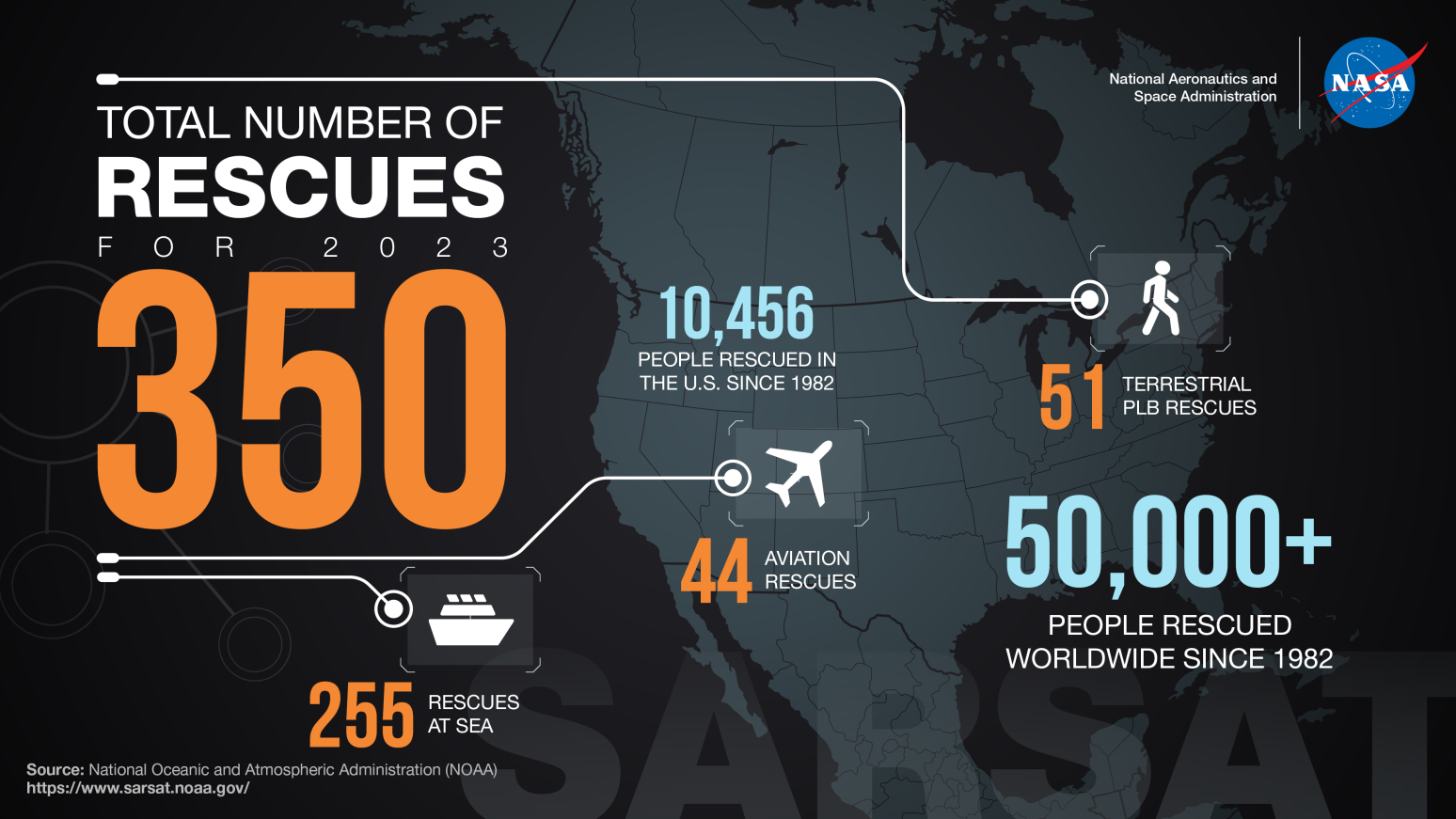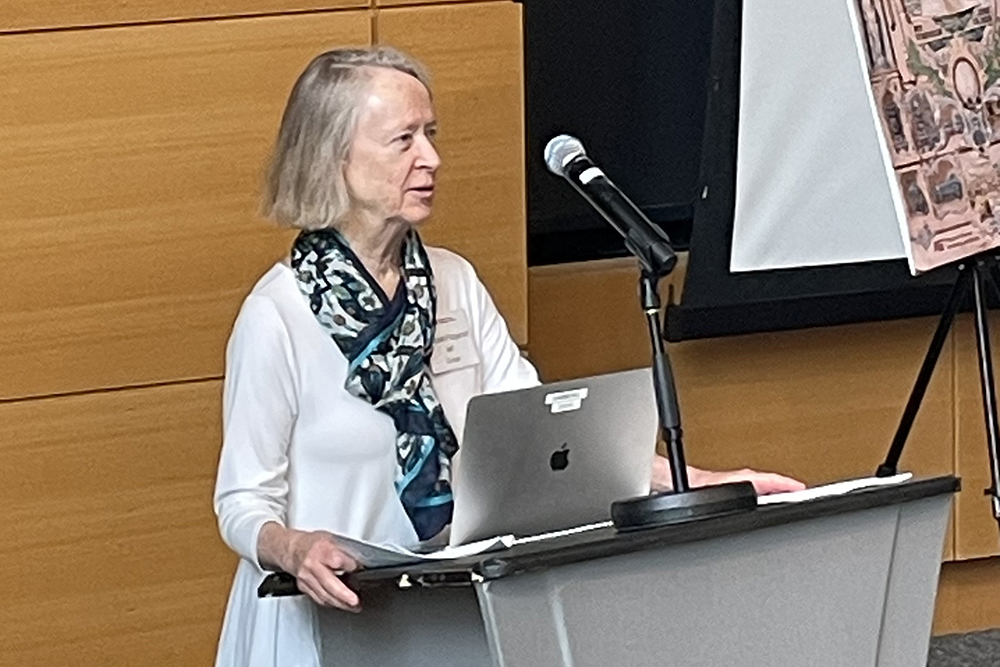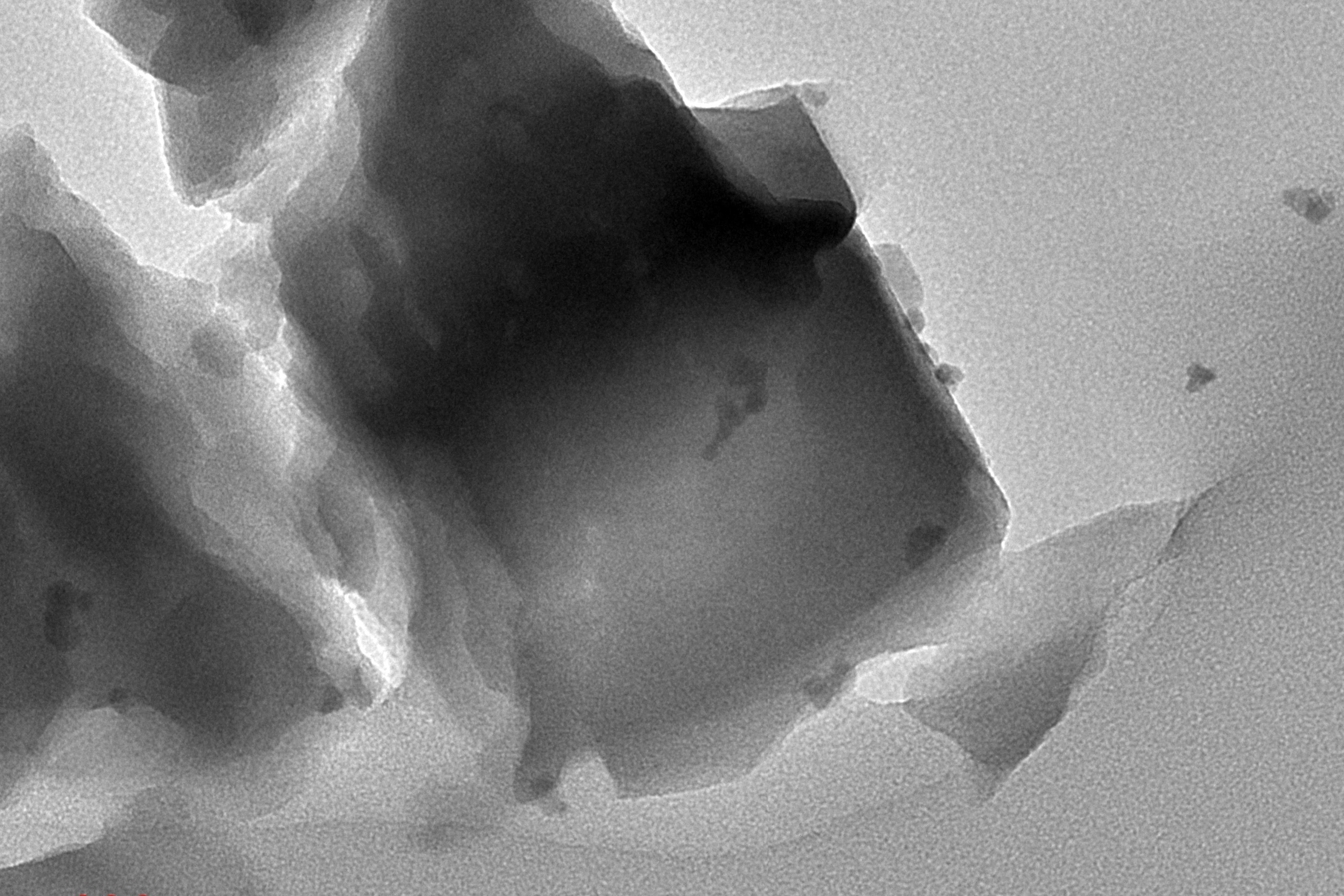
In 2023, NASA-developed search and rescue technologies aided first responders in locating and saving 350 lives in the United States. Now, NASA is incorporating that same technology in astronaut missions.
NASA provides technical expertise to the international satellite-aided search and rescue effort known as Cospas-Sarsat. This technical expertise has enabled the development of multiple emergency location beacon types, which explorers can use when in need.
Should an explorer become distressed or lost, they can activate the 406 MHz frequency beacon. The beacon sends a distress signal to a GPS (Global Positioning System) satellite in space, which then relays the signal location to the Cospas-Sarsat network. With the precise position of the beacon, the network can alert first responders anywhere in the world and initiate the rescue.
These beacons provide explorers with a sense of safety as they venture on land, air, and sea. There are three types of beacons available for users: personal locator beacons, used by hikers and other land explorers; emergency position indicating radio beacons, for boaters and sailors; and emergency locator transmitters for aircraft pilots.
In 2023, 51 rescues were made for activated personal locator beacons; 255 for emergency position indicating radio beacons; and 44 for emergency locator transmitters, according to the National Oceanic and Atmospheric Administration (NOAA).
NASA’s Search and Rescue office has a long legacy of Earth-based beacon development and is now applying that expertise to support NASA’s Artemis campaign. For Artemis I, beacons placed on the Orion spacecraft located the uncrewed capsule as it splashed down in the Pacific Ocean after its 1.4-million-mile journey around the Moon and back.
Going further, for Artemis II, NASA’s first crewed mission under Artemis, the agency is including second-generation beacons called ANGEL (Advanced Next-Generation Emergency Locators) on the astronauts’ life preservers and installing another location beacon onto the Orion spacecraft capsule. In the event NASA astronauts Reid Wiseman, Victor Glover, Christina Koch, and Jeremy Hansen of CSA (Canadian Space Agency) may need to exit from Orion without the assistance of recovery personnel, NASA will be able to locate them immediately using the ANGEL beacon locations.
In July 2023, as part of the at-sea recovery testing for Artemis missions, search and rescue team members were aboard the USS John P. Murtha to validate ANGEL and the newly developed SAINT (SAR Intelligent Terminal) application, which tracks the beacons’ locations in real-time. The team is now readying itself for the next at-sea test of Artemis recovery procedures in February.
The Search and Rescue office is a part of the SCaN (Space Communications and Navigation) program office and is essential for NASA’s endeavors to the Moon and Mars. The office has a unique portfolio that advances NASA’s exploration capabilities while enabling the life-saving technology used by Earth-based adventurers.
NOAA manages the U.S. network region for Cospas-Sarsat, which relies on flight and ground technologies originally developed at NASA’s Goddard Space Flight Center in Greenbelt, Maryland.
The SCaN program at NASA Headquarters in Washington provides strategic oversight to the Search and Rescue office. U.S. region rescue efforts are led by the U.S. Coast Guard, U.S. Air Force, and many other local rescue authorities.
By Kendall Murphy
NASA’s Goddard Space Flight Center, Greenbelt, Md.



























